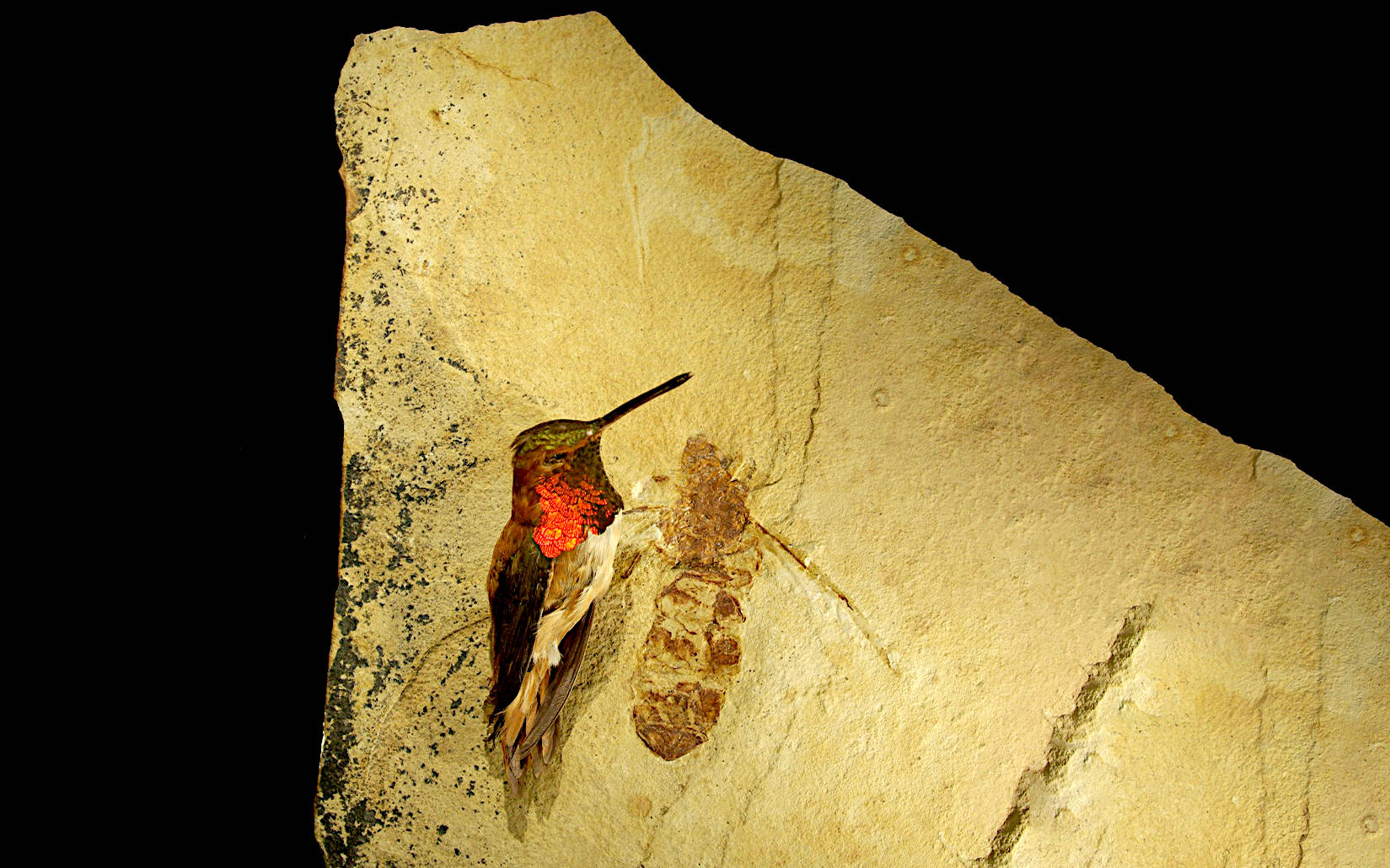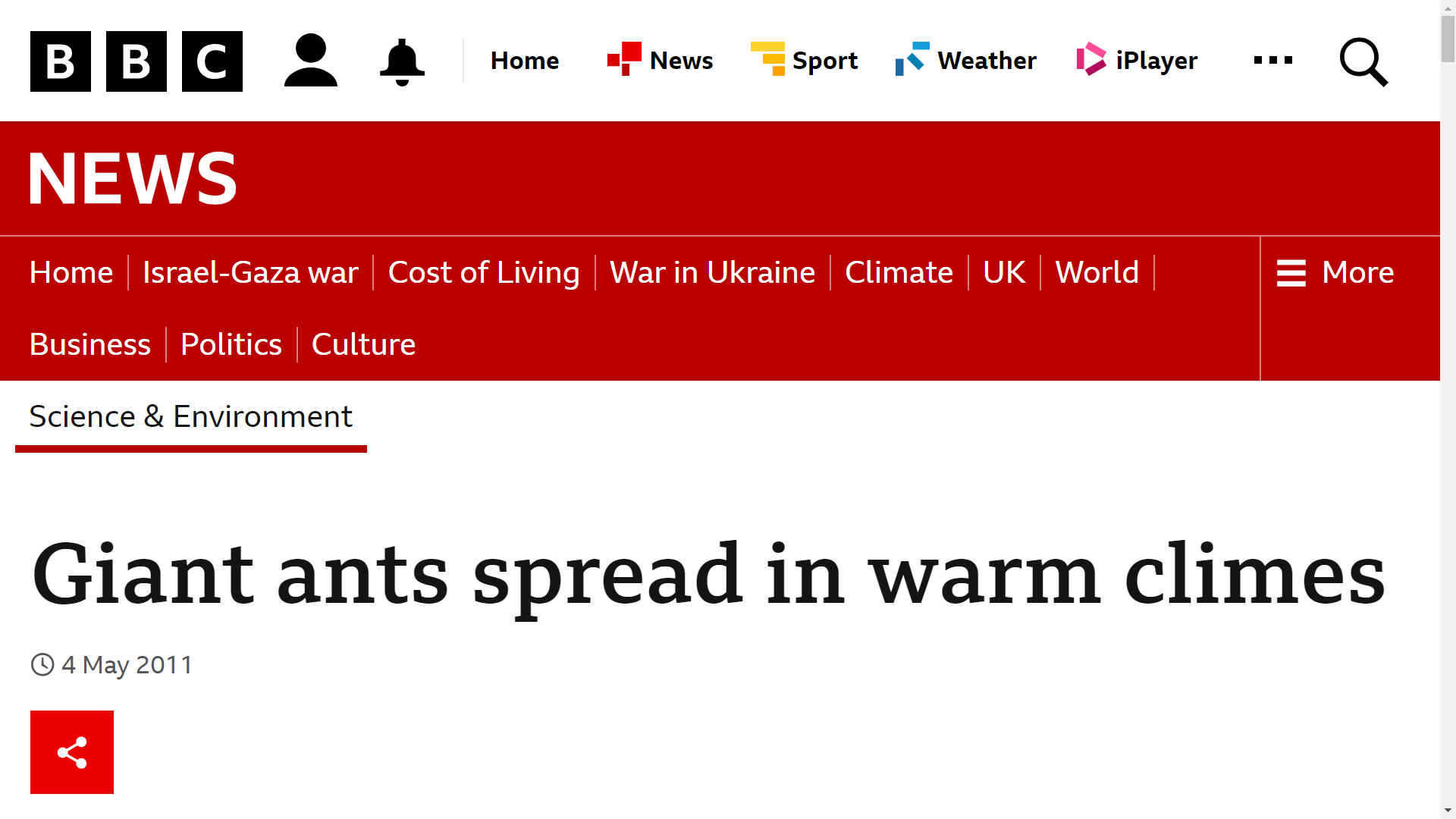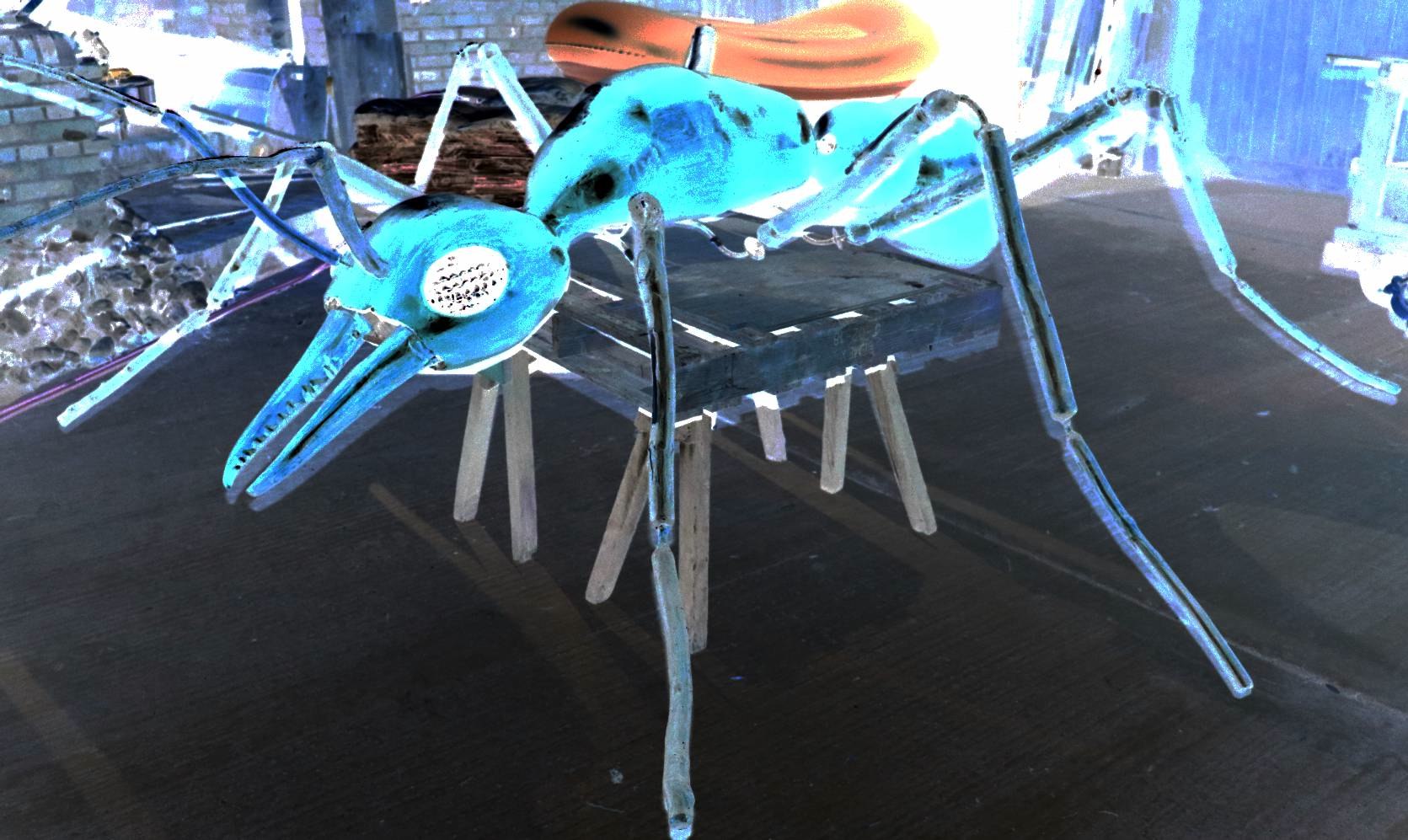
...
INTERESTING ENGINEERING MARCH 9 2023 - 'GIANT' ANT FOSSIL QUESTIONS DISPERSAL OF LIFE 50 MILLION YEARS AGO
A first-of-its-kind giant fossil of a queen ant that was excavated in Canada throws light on how climate change impacted the organism's size.
A recent study led by Simon Fraser University paleontologists on the fossil remains of an extinct genus of
ants is raising questions on how ancient animals and plants traveled between continents some 50 million years ago.
According to a press release, the distribution patterns of these organisms — which are being excavated now — across Europe and North America throw light on how climate change could have possibly changed their size and adaptability to harsh climate conditions.
First of its kind in Canada, the preserved remains of the extinct giant queen ant Titanomyrma was discovered by a resident in the Allenby Formation of Princeton and was made available to the researchers through the town’s
museum.
Interestingly, this extinct ants’s biggest species was surprisingly gigantic, with the body mass of a wren (small brown singing bird) and a wingspan of half a foot.
Following its discovery, the researchers compared it with another gigantic Titanomyrma fossil found a decade earlier, preserved in a Wyoming museum.
THE MASSIVE SIZE OF THE QUEEN ANTS WAS EARLIER ASSOCIATED WITH BEING EITHER THERMOPHILLIC OR CRYOPHOBIC
"This ant and the new fossil from British Columbia are close in age to other Titanomyrma fossils that have been long known in Germany and England," Bruce Archibald, the lead researcher, said in a statement. They found that modern ants with the largest queens inhabit only hot climates, almost exclusively in the tropics, leading them to associate large-size queen ants with high temperatures.
So the great size of queens is associated with being either thermophilic (an organism that thrives in high temperatures) or cryophobic (fear of extreme cold).
But this didn’t align with the fact that the ancient Arctic had a milder climate than today, meaning it wouldn’t have been hot enough to allow Titanomyrma to cross during any time when the land bridge was present (Europe and North America were connected by land across the Arctic then).
SO HOW DID THESE ANTS CROSSOVER?
The researchers suggested in 2011 that this might be explained by brief intervals of global warming creating short-term intervals of friendly conditions for them to cross.
The newly discovered Titanomyrma in Canada is incomplete, indistinctly preserved, and has been distorted in fossilization. So the true size of this fossil is unclear. Had it been small in size, it would have supported gigantism in Titanomyrma, meaning it would require a hot climate to pass. Whereas, if it had been large, the Titanomyrma may have been cold-winter intolerant and able to have crossed during any time.
Archibald says the research is helping scientists better understand how ancient animals and plants were formed when the climate was much different.
“Titanomyrma may also help us better understand how global warming could affect how the distribution of life may change. To prepare for the future, it helps to understand the past.”
Simon Fraser University paleontologists Bruce Archibald and Rolf Mathewes, together with Arvid Aase of Fossil Butte National Monument in Wyoming, have published their research on the fossil in the current edition of the scientific journal The Canadian Entomologist.

STUDY ABSTRACT
We examine the implications for intercontinental dispersal of the extinct ant genus, Titanomyrma Archibald et al. (Hymenoptera: Formicidae: Formiciinae), following the discovery of its first fossil in Eocene temperate upland Canada. Modern Holarctic distributions of plants and animals were in part formed by dispersals across Late Cretaceous through early Eocene Arctic land bridges. Mild winters in a microthermal Arctic would allow taxa today restricted to the tropics by cold intolerance to cross, with episodic hyperthermal events allowing tropical taxa requiring hot climates to cross. Modern ants with the largest queens inhabit low latitudes of high temperature and mild coldest months, whereas those with smaller queens inhabit a wide variety of latitudes and climates. Gigantic and smaller formiciine ants (Titanomyrma and Formicium Westwood) are known from Europe and North America in the Eocene. The new Canadian Titanomyrma inhabited a cooler upland. It is incomplete, indistinctly preserved, and distorted in fossilisation, and so we do not assign it to a species or erect a new one for it. The true size of this fossil is unclear by this distortion: small size would support gigantism in Titanomyrma requiring hot climates and dispersal during hyperthermals; if it was large, it may have been cold-winter intolerant and able to have crossed during any time when the land bridge was present.
By

Several animals have an
anti-freeze protein in their blood. This includes arctic and antarctic fish, arthopods, octopuses, painted turtle hatchlings, wood frogs, arctic ground squirrels (the only mammal), some beetles, moths, bacteria, and the champions- tardigrades or water bears . They have handled lab temps from -278°C (-458°F) up to 150°C (300°F). Some tardigrades frozen in 1983 were thawed out 30 yrs later and not only survived, but could reproduce. It’s been estimated that they can withstand being dried out and will rehydrate and do okay after about 100 yrs. They have also gone into space and tolerated lack of oxygen and radiation.

The
artwork is also suitable for use in "Jimmy Watson's Magic Dinobot."
A proposed network TV serialization, about boy who saves his paper round
money to buy himself a robot for Christmas. Then, when assembled, it
come to life, to become his friend.


Is there any basis of truth
in the "Sectasaur" Antarctic John Storm adventure?
The “Sectasaur” Antarctic John Storm adventure is a work of fiction,
but it is based on some scientific facts and speculations. For example,
the story involves the discovery of a giant prehistoric insect,
resembling a giant ant, that was frozen in the Antarctic ice for
millions of years. This is inspired by the real fossil genus Titanomyrma,
which was a group of giant ants that lived during the Eocene epoch,
about 50 million years ago. Some of these ants were as big as
hummingbirds, and had wingspans of up to 15 cm. They are known from
fossils found in Germany, England, Wyoming, and British Columbia123. The
story also explores the possibility of cross-Arctic dispersal of
thermophilic insects, which means that these ants could have migrated
from Europe to North America via a land bridge that existed across the
Arctic when the climate was warmer. This is a hypothesis that has been
proposed by some paleontologists to explain the distribution of
Titanomyrma and other ancient organisms12. However, there is no evidence
that Titanomyrma or any other giant insect ever existed in Antarctica,
or that they could survive the freezing temperatures there. The story
also involves the use of DNA technology to recreate and enhance extinct
species, which is a controversial and hypothetical topic that has
ethical and ecological implications. The story is meant to be an
entertaining and imaginative adventure, not a realistic or accurate
depiction of paleontology or biology.
1. https://en.wikipedia.org/wiki/Titanomyrma
2. https://interestingengineering.com/science/giant-ant-fossil-life-50-million
3.
https://www.livescience.com/14008-giant-ant-fossil.html


ARTWORK
- Somewhat better than the huge ants in "Them," but perhaps not as good as
the CGI in Antman. Now a museum
exhibit in Sussex, the artwork is based on an Australian Bulldog
ant.
https://www.bbc.co.uk/news/science-environment-13269302
https://www.bbc.co.uk/news/science-environment-13269302
https://en.wikipedia.org/wiki/Titanomyrma
https://interestingengineering.com/science/giant-ant-fossil-life-50-million
https://www.livescience.com/14008-giant-ant-fossil.html
RETURN
TO BASECAMP
OR EXPLORE OUR
PREHISTORIC A-Z







